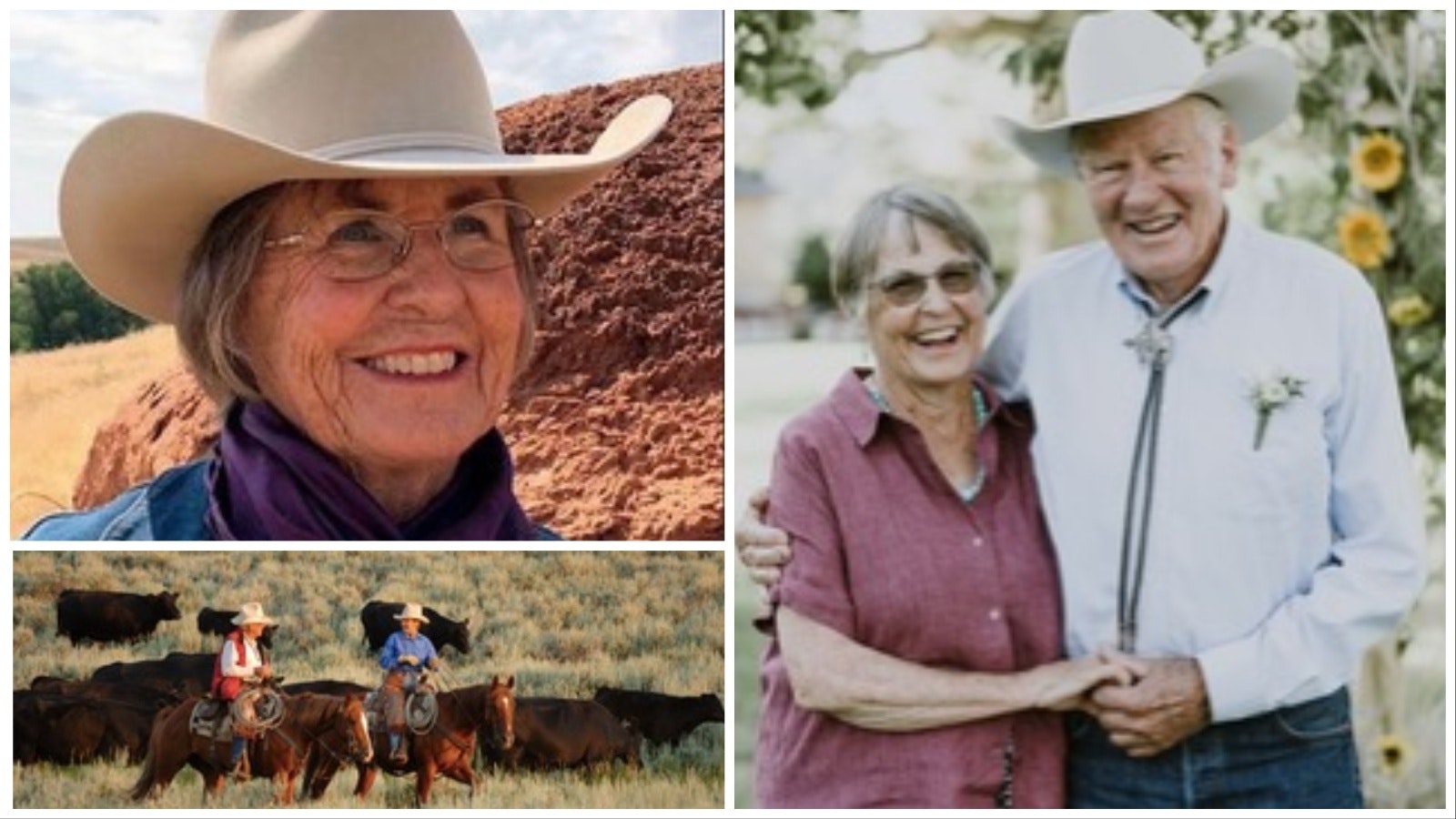Ranch girls learn early that they are treated as equals when they do the work that needs to be done and the women inducted into the Wyoming Cowboy Hall of Fame are proof of that work ethic.
Mary Budd Flitner was the second of three daughters and her father expected them to “do a day’s work” on the ranch. They learned how to “read” and “finesse” cattle by understanding behavior and anticipating what cattle might do next.
“I don’t remember conversations about gender equality; I grew up thinking that ability was one’s defining factor, and in our upbringing, if my sisters and I could learn how to do something, we did,” Mary wrote in her memoir My Ranch, Too, published by the University of Oklahoma Press.
A story in her book demonstrates attitudes of cowboys and the abilities of cowgirls:
The ranch hands rolled their evening smokes outside the bunkhouse as they sat talking. They didn’t see me walking past, and it surprised me when I realized they were talking about my sisters and me. “That seems like a helluva bunch of cows to gather tomorrow, with just those little bitty girls for help,” one of the new men said. He continued, striking a match, “Don’t see how we’ll get it done, all those miles to go.” He took a long draw on his cigarette, blew out the flame. “Probably just a damned nuisance, babysitting them. Gotta put up with the boss’s kids, I guess.” Embarrassed, I ducked back into the shadow and waited to hear what was said next.
“Well,” replied Walt, who had worked for Dad for many years, “we’ll get it done. Don’t you worry about those little girls. They are pretty damned-good hands, and they can keep up. Just see that you do.”
Mary’s great-grandfather came to Wyoming in 1878 with a trail herd and established the Budd Ranch, now the site of Big Piney. It was there that she learned how to do ranch work as a “little bitty girl” and later a young woman. She would meet Stan Flitner while they both attended the University of Wyoming. After their marriage they built their ranching life together and this year they are both being inducted into the Wyoming Cowboy Hall of Fame.
In 1906, Stan’s family moved from Iowa and bought a ranch in the Shell Valley. Stan was the youngest of four brothers and sisters, and all the leftover clothes, saddles, and horses were passed down to him. When he was six, he rode eight miles from the home ranch to Shell to meet his father, who was bringing cattle off the mountains.
After their marriage Mary and Stan returned to the Flitner Diamond Tail Ranch, which they ran in partnership with Stan’s brother David. They had four children, Carol, Tim, Sara, and Dan.
In the 1970s, the Diamond Tail Ranch was split between Stan and David. Stan and Mary retained the Diamond Tail brand and continued their own ranching operation. The 1970s -’80s were hard times in the cattle business as cattle prices were low and interest rates skyrocketed. Stan and Mary supplemented their income by taking in cow-calf pairs and moving stock around on ranches and leased property. Stan also ran an outfitting company and guided hunters on elk hunts. At a bar one night, a partnership was formed with close friend Steve Canady to form the S & S brand. Cattle prices increased slowly and interest rates came down. The S & S partnership helped to make the Diamond Tail Ranch profitable.
Stan and Mary Flitner worked their cow-calf pairs very consistently by horse. At one time they had a herd of 38 horses for themselves and their family to use for their work on the ranch. Until a year ago both Mary and Stan worked the pastures cutting pairs to help their son and daughter in law.
The Flitners annually moved cattle between the home place and the mountain portion of the ranch.
When it came to branding every spring, Mary had a list of do’s and don’ts for new riders that included:
Do not bring a new horse that has not been to a branding.
Do not come to the branding to practice your roping.
By the 1990s, Stan and Mary joined others in the purchase of the Castle Garden Ranch south of Moneta. The Castle Garden Ranch was 100 miles from the Diamond Tail and all the partners worked their herds on the 100,000 acres with water and good grazing. After 10 years of relentless work, the Flitners and their partners sold the Castle Garden operation.
In 2006, Stan and Mary turned over management of Diamond Tail Ranch to their son Tim and his wife and built a new house within sight of the home place. Even now in their eighties, with almost 150 combined years in the saddle, Mary and Stan continue to ride and to work cattle on good days — and not so good days — on solid, proven horses. Their commitment to good range management for which the Diamond Tail has become known around the country is their enduring legacy.
To learn more about the cowboy legacy of Mary and Stan Flitner, read her book, My Ranch, Too.





